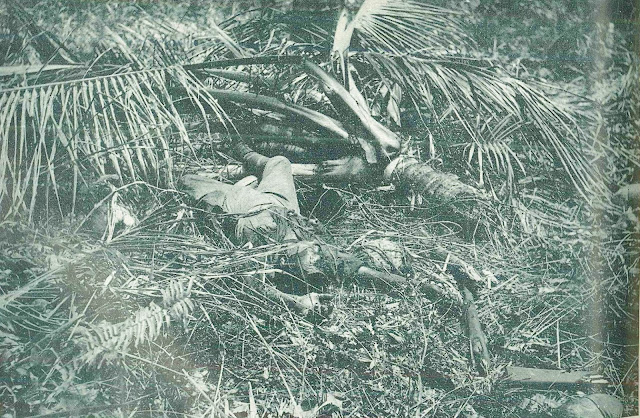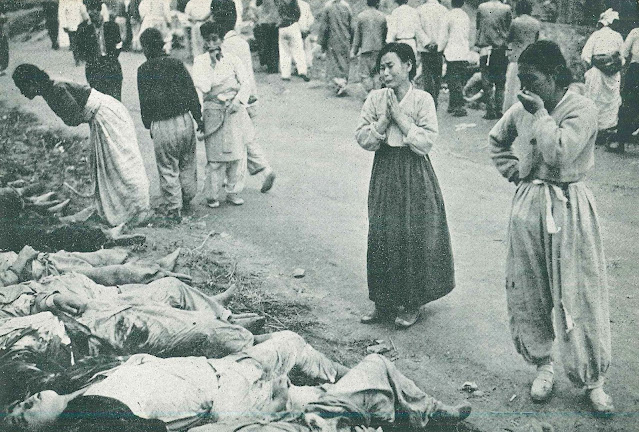A girl (T.Kuwabara, Denmacho) exposed to the Hiroshima atomic bomb on August 6, 1945, developed keloids on both upper limbs, back and neck. About two years later, on July 7, 1947, she was photographed in the back with a sign listing her. The poor living conditions during and after the war also contributed to the prolonged healing of atomic bomb survivors, leading to suppuration of burns, delayed wound repair, and the formation of thick subcutaneous scars. Subsequent contraction of the scar tissue also caused deformity or dysfunction. The sequelae of keloids were most pronounced on the face, neck, and fingers.
Hibakusha who suffered significant primary burns or flash burns near the hypocenter, the center where the Hiroshima and Nagasaki bombs exploded, were also exposed to tremendous blast and radiation. On the day of the explosion, most of the survivors died instantly or from at least Stage I burns. Hibakusha who suffered burns in the area of about 1,000 to 2,000 meters from the hypocenter were accompanied by secondary burns of varying degrees, heating or scorching their clothes. In addition to moderate flash burns, contact burns and flame burns were also associated with burns. These secondary injuries were similar in nature to those observed in the case of flame burns. They resembled grade 3 or grade 4 burns in which significant damage occurred in the deep dermis and subcutaneous tissue. These lesions were often complicated by flash burns, which took a long time to heal.
Most of the frequent flash burns (primary burns) that occurred in areas within about 2,000 to 3,000 meters from the hypocenter initially healed in a relatively short period of time, forming simple, thin scars. However, the scars caused by the flash burns resulted in significant keloid formation after about 3 to 4 months.
The incidence of scarring and keloids was found to be high among students from elementary to junior high school in a study of the atomic bombing of Hiroshima, Japan, in December 1946. Of the surviving atomic bomb survivors, a total of 426 cases were actually examined, including 388 cases of burns, 63 cases of radiation sickness, 39 cases of trauma, 5 cases of no trauma, and 247 cases of keloids arising from the surface of burns. The incidence of keloids in students exposed outdoors at a distance of about 1.6 km was about 89.1% (41 of 46 burns). At a distance of about 2.1 km, the rates were about 94.5 percent (52 of 55) and 87.1 percent (95 of 109). And at a distance of about 2.3 km, about 32.6 percent (51 of 156). One person who was burned indoors at about 1.2 km had keloids. Of the 19 people who were burned outdoors in the shade at about 1.3 km, seven had keloids (36.8%). And of the two in the shade of about 2.1 km, no cases formed keloids. The total number of keloids and burns in the 239 cases who developed these conditions after receiving outdoor burns was 697 outdoors and 2,128 indoors, respectively.
In August 1946, the Nagasaki atomic bomb survey found keloids in 106 of 158 (67.1%) cases with burn scars and 24 of 114 (21%) cases with traumatic scars. Keloids occurred more frequently in females than in males (74.3% in females, 62.0% in males; most commonly in males, especially in teenagers). Most of the cases were located within about 1.6 km to 2 km from the hypocenter (55.5% of males; 56.6% of females).
























